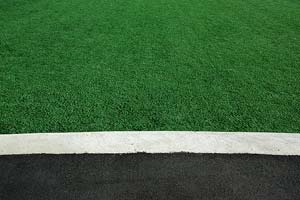What makes a public space popular?
Posted by Adrienne on August 27, 2008
Here is a back-to-school quiz.
Where would you rather hang out:
A) On a fake turf-covered lawn, or
B) In a landscape architect-designed plaza complete with fountains, vegetation, and benches?
I imagine most people would pick B, wouldn’t you? What would you predict other people would say?
Turns out it may not be that obvious. This article found on the American Society of Landscape Architects’ blog compares several public spaces in a DC suburb with surprising results. The beautiful plaza was indeed packed on a summer evening, but so was the fake lawn nearby! Locals had adopted the astroturf square as an impromptu park.
So what’s going on here? What we don’t know is whether this is the norm or maybe if the area was so packed on this particular special occasion that people were just plopping down where ever they could. Was the plaza packed because of the show going on, or is it always full? Or maybe it has mainly to do with the fact that there was a place to eat near the lawn.
It’s not easy to get a real picture without data like this, but the question has been asked: what kind of public places are most popular? Clearly it is not solely a function of the quality of the design of the space. How important is design then? Or, what kind of designs would appeal to the most people? Or maybe it’s more about the context of the space. It goes without saying that even a prize-winning design will see few visitors if it’s in the middle of nowhere.
I once read about a grassroots design strategy that looks at current uses of a public space and then designs the new space to better address those uses. For example a public park was used by a group of persons for drinking during the day. Some people might have a problem with this (illegal?) activity. But the designers saw that this was a real use in that park and, rather than judging the morality of the issue and reprograming the space, designed an informal beer garden that would provide a legitimate place for drinking. In this way they were respecting the local citizens and creating a distinctly local place to serve their needs.
Now I’m not saying we should install beer gardens in all parks (though it might be fun), but maybe this example could give us a new way of looking at designing public spaces. Instead of programming a plaza in a way we THINK the public might want, what if we asked them or observed current behavior to find out how they might actually use it. I know this isn’t a new idea (public charrettes are common steps in today’s design process) but this is where landscape architects might need to put aside their idealistic tendencies and consider pragmatic results.
It’s an ongoing discussion that provides endless questions. Any thoughts?
© Copyright 2006 Adrienne Bockheim.
